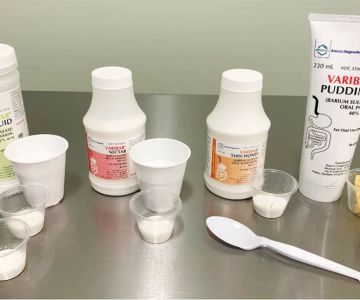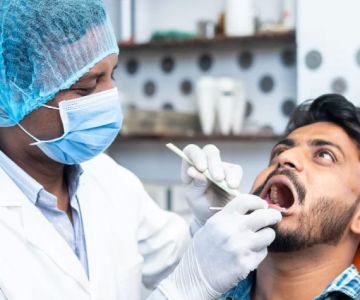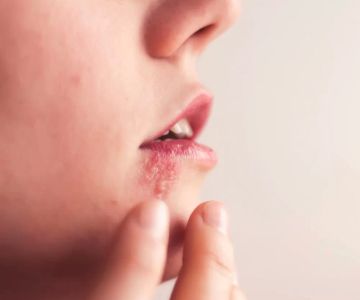When Taking Oral Temperature: How Long Should You Check It?
1. The Basics of Taking an Oral Temperature
Taking an oral temperature is a quick and easy way to monitor your health, especially when you're trying to assess if you have a fever. Whether you’re a parent checking your child’s temperature or you’re keeping an eye on your own health, knowing how long to hold the thermometer in your mouth can make all the difference in getting an accurate reading.I’ve been in situations where I had to take an oral temperature for myself or a loved one, and I realized that while it may seem simple, there are some key factors to consider for an accurate result. Oral temperature readings can be influenced by several things, such as how long you leave the thermometer in place and the placement of the thermometer in the mouth. Getting it wrong could lead to inaccurate readings, which could delay appropriate action if someone is actually ill.In this article, I’ll share everything I’ve learned about how to properly take an oral temperature and how long you should check it for the most reliable results.2. Why Oral Temperature Matters
The oral temperature is one of the most common ways to measure body temperature. It’s typically done by placing a thermometer under the tongue for a short amount of time. Monitoring oral temperature is especially important when trying to detect a fever, which is often a sign of infection or illness. A normal oral temperature for adults is typically around 98.6°F (37°C), but it can vary slightly based on a person's unique body temperature.- Why Use Oral Temperature: Oral temperature readings are often preferred because they are non-invasive and fairly simple to take. They can give a quick snapshot of whether or not a person has a fever or if their body temperature is within the normal range.- When Should You Check Oral Temperature: It’s common to check oral temperature when you’re feeling unwell, suspect you have a fever, or when monitoring a loved one’s health. Additionally, if you’re undergoing a medical assessment or checking for illness, taking an accurate oral temperature can be a helpful first step.While oral temperature is reliable, it’s important to understand how to do it correctly to ensure an accurate reading.3. How Long Should You Wait for an Accurate Oral Temperature Reading?
One of the most common questions I’ve received while taking an oral temperature is, "How long should I leave the thermometer in my mouth for an accurate reading?" The answer is simple, but there are some nuances to keep in mind.- Digital Thermometers: For most modern digital thermometers, the general rule is to leave the thermometer in your mouth for about 30 seconds to 1 minute. This ensures that the thermometer has enough time to detect the body’s temperature accurately. Many digital thermometers will beep when the reading is complete, signaling that you can remove the thermometer.- Glass Thermometers (Mercury or Alcohol): If you're using a traditional glass thermometer, which has become less common due to safety concerns, you should typically leave it in place for about 3-5 minutes. Since glass thermometers don’t beep to signal completion, it’s important to wait the full time to ensure an accurate reading.- Infrared Thermometers: Infrared thermometers are often used for quick temperature checks, but they are typically used on the forehead or ear, not the mouth. These devices usually provide results within a few seconds and are designed to be faster than traditional thermometers.In general, you should follow the instructions that come with the thermometer you are using, as each device may have slightly different guidelines. If you're using a digital thermometer, be patient and wait until the beep or indicator shows that the reading is complete.4. How to Take an Accurate Oral Temperature
In addition to knowing how long to check the temperature, the way you take the reading matters too. Here's a guide to ensure that your temperature reading is as accurate as possible:- Place the Thermometer Properly: For accurate readings, make sure the thermometer is placed correctly under your tongue. The thermometer should be positioned on the back side of your tongue, close to the center, with the mouth closed around it. This placement ensures that the thermometer is measuring your internal body temperature, not the ambient temperature of the air inside your mouth.- Keep the Mouth Closed: When you’re taking your oral temperature, it’s essential to keep your mouth closed around the thermometer. This helps the thermometer get a more consistent reading. Avoid talking or moving the thermometer around too much while it’s in your mouth.- Wait Until the Thermometer Signals Completion: Whether you're using a digital or glass thermometer, wait for the signal that the reading is complete. For digital thermometers, this typically means waiting for the beep. For glass thermometers, you'll need to wait about 3-5 minutes.- Clean the Thermometer After Each Use: Once you’ve finished taking the temperature, make sure to clean the thermometer with soap and water or an alcohol wipe. This prevents the spread of bacteria and ensures that the thermometer is ready for the next use.These tips will help ensure you get an accurate oral temperature reading and make informed decisions about your health or your loved one’s condition.5. Factors That Can Affect Your Oral Temperature Reading
While you can follow all the best practices, there are a few factors that might influence the accuracy of your oral temperature reading:- Food and Drinks: Eating or drinking right before taking your temperature can affect the result. If you’ve recently consumed something hot or cold, it can temporarily raise or lower the temperature inside your mouth. I recommend waiting at least 15 minutes after eating or drinking before taking your oral temperature to avoid any distortion in the reading.- Exercise or Activity: Physical activity can raise your body temperature temporarily. If you’ve just exercised, it’s best to wait until your body has cooled down before taking your temperature.- Mouth Breathing: If you breathe through your mouth while the thermometer is in place, it may cause an inaccurate reading since the thermometer will measure the temperature of the air in your mouth rather than your internal body temperature.- Thermometer Placement: If the thermometer isn’t placed correctly or if it’s not in contact with your body’s internal temperature for the recommended amount of time, the reading may not be accurate.Being mindful of these factors and ensuring that you’re in a calm, neutral state can help you get a more reliable oral temperature reading.6. What to Do If Your Temperature is Abnormal
If you find that your oral temperature is higher than normal (typically over 100.4°F or 38°C), this may indicate a fever, which is a common symptom of infection or illness. It’s important to take additional steps to monitor your symptoms:- Rest and Hydration: If you’re running a fever, be sure to stay hydrated and get plenty of rest. Fever can be the body’s natural response to fight off infections.- Monitor Symptoms: If your fever persists or is accompanied by other symptoms such as chills, body aches, or difficulty breathing, it’s a good idea to seek medical advice. A fever that lasts for more than 48 hours or is particularly high should be addressed by a healthcare provider.- Medications: Over-the-counter fever-reducing medications like acetaminophen (Tylenol) or ibuprofen (Advil) can help lower your fever and relieve discomfort. Always follow the recommended dosage and consult with a healthcare provider if needed.If you suspect that your fever is related to a specific illness or if you're concerned about your health, don't hesitate to reach out to a medical professional for further evaluation.For more tips on taking accurate temperatures and other health-related concerns, visit Dentistry Toothtruth, where we provide expert advice and solutions to help keep you and your family in top health!







 Sundance Endodontics5.0 (254 review)
Sundance Endodontics5.0 (254 review) Kaiser & Rosen Dental Associates4.0 (107 review)
Kaiser & Rosen Dental Associates4.0 (107 review) Bonanza East Dental4.0 (24 review)
Bonanza East Dental4.0 (24 review) Barclay Family Dental4.0 (152 review)
Barclay Family Dental4.0 (152 review) Children's Dentistry5.0 (1 review)
Children's Dentistry5.0 (1 review) Tend East Nashville4.0 (319 review)
Tend East Nashville4.0 (319 review) The Importance of Oral Health Education During Pregnancy for a Healthy Pregnancy
The Importance of Oral Health Education During Pregnancy for a Healthy Pregnancy Best Tips for Brushing Your Teeth Properly for Healthy Gums: Essential Techniques for Oral Health
Best Tips for Brushing Your Teeth Properly for Healthy Gums: Essential Techniques for Oral Health Why Skipping Dental Checkups Can Lead to Bigger Oral Health Problems
Why Skipping Dental Checkups Can Lead to Bigger Oral Health Problems Advantages of Porcelain Dental Restorations
Advantages of Porcelain Dental Restorations How Can Diabetes Cause Tooth and Gum Problems? Preventing and Managing Oral Health Issues
How Can Diabetes Cause Tooth and Gum Problems? Preventing and Managing Oral Health Issues Healthy Habits for Promoting Good Oral Health and Hygiene: Tips for a Healthy Smile
Healthy Habits for Promoting Good Oral Health and Hygiene: Tips for a Healthy Smile